I am drive with my dad
When Skies Turn Yellow: Are You in Danger?
You’re in the countryside, in the middle of nowhere, when it happens. You look up at the sky and notice that it’s taken an ominous yellow hue. Suddenly, a terrifying thought pops up in your mind — haven’t you read somewhere that the yellow sky means an approaching tornado? Wait, stop running! Let’s figure out if it’s true!
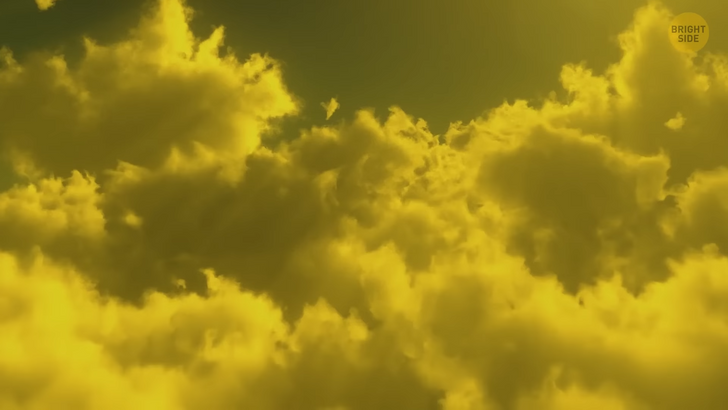
There are lots of reasons why the sky might seem yellow. Dust storms, pollen, smoke in the atmosphere... A yellow sky doesn’t necessarily mean a tornado is on the way, and you need to search for shelter. In fact, any kind of storm cloud may cause the sky to look eerily yellowish. The clouds scatter the short-wave blue light coming from the Sun, and from our perspective on Earth, the sky might look yellow. So, there’s no reason to connect it with an approaching hurricane or tornado. In the worst-case scenario, you might need to get ready for a regular thunderstorm.
Just keep in mind that even though yellow skies do look haunting and unnatural, it doesn’t mean the end of the world. Just check local weather reports to find out the reason for this phenomenon. If you come across an article about sand storms, pollen, or wildfires or if meteorologists are getting ready for storms, you’ll know what’s going on.
Another common wisdom in the Central U.S. and other tornado-prone regions claims that once you see the sky turn green during a thunderstorm, you gotta gather up your loved ones and rush for the cellar! A twister is on the way! But from the point of view of science, there’s little evidence to prove this belief. At the same time, green skies might mean bad thunderstorms. Over the past 15 years, a group of scientists has been examining green thunderstorms, noting down their observations. They confirm that green skies often go hand in hand with severe weather. But they haven’t noticed any direct connection to hail or tornadoes.
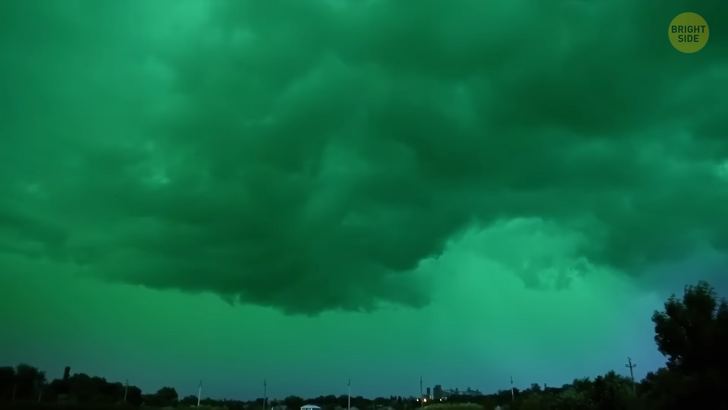
Another question is, “Are green skies real, or is it just a mesmerizing optical illusion caused by light reflected off the ground back up to the sky?” Well, experts haven’t come to any conclusion yet. But most of them point to the liquid water the air contains. These moisture particles are so tiny they might bend the light and make the observer perceive it in a different way. These droplets absorb red light, which makes the scattered light appear blue.
And at certain times, for example, during sunset, this blue light might look greenish. There have been other cases of bizarre sky colors in many countries around the globe. Let’s have a look at some of them. For example, this incident occurred in Japan on October 12, 2019. The phenomenon of a bright purple sky, known as a scattering phenomenon, turned out to be a sign of a terrible storm. It was followed by Typhoon Hagibis, whose speed reached almost 100 mph at its center.
On May 7, 2022, the sky turned blood-red in the Zhoushan area of China. It looked really scary and made lots of people panic. But the local Bureau of Meteorology explained that there was nothing sinister about the red sky. The phenomenon was most likely caused by refraction and scattering of light coming from the ships in the port. Besides clouds, you can see many other phenomena in the sky above your head.
Their scientific name is “photometeors,” where “photo” stands for “light,” and “meteor” refers to literally anything in the sky. These visual phenomena appear when the light from the Sun or the Moon interacts with something in the atmosphere of our planet — which is most often water in one of its forms. I bet you know at least two of such photometeors — those are a rainbow and a moonbow. Rainbows form when sunlight passes through water droplets, like rain or fog. As for moonbows, they’re way fainter than rainbows, and their colors are more muted or non-existent.
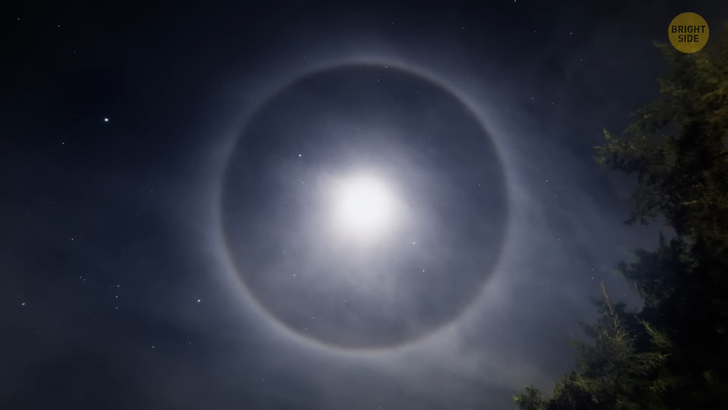
Another phenomenon you might spot in the sky is a halo around the Sun or the Moon. It’s usually a shining white ring with our star or Earth’s natural satellite at the center. Sometimes you can spot a red fringe on the inside or, more rarely, a violet ring on the outside of the halo. Halos appear when sunlight or moonlight is refracted or reflected by ice crystals floating high in the atmosphere. Solar halos are more prominent than lunar ones because of the difference in the intensity of light.
If you ever see one or several narrow and more faintly colored bands next to a rainbow’s violet edge, those are supernumerary bands, aka a stacker rainbow. The tinier the water droplets in the air are, the broader and less saturated such bands become. Bright spots that appear on one or even both sides of the Sun are called “sun dogs” or “parhelion.” This phenomenon occurs when ice crystals refract sunlight. The spots themselves may look like bright patches or have some color to them — blue on the outside and red on the inside.
If you spot a small rainbow-like ring surrounding your shadow, that’s a glory. Just like its big sibling, a glory can only be seen directly opposite to the sun. This phenomenon is most often observed by mountain climbers who see glories cast onto clouds below their vantage points. Glories can also surround the shadow of airplanes cast onto the clouds over which they’re flying.
Now, let’s talk about auroras. This stunning phenomenon is also called northern lights when it occurs in the Northern Hemisphere and southern lights when it takes place in the Southern Hemisphere. Auroras happen in Earth’s upper atmosphere. They’re caused by fast-moving solar winds that strike the planet’s magnetic bubble called the magnetosphere. Auroras can take different shapes, from arcs and luminous curtains to patches and bands.
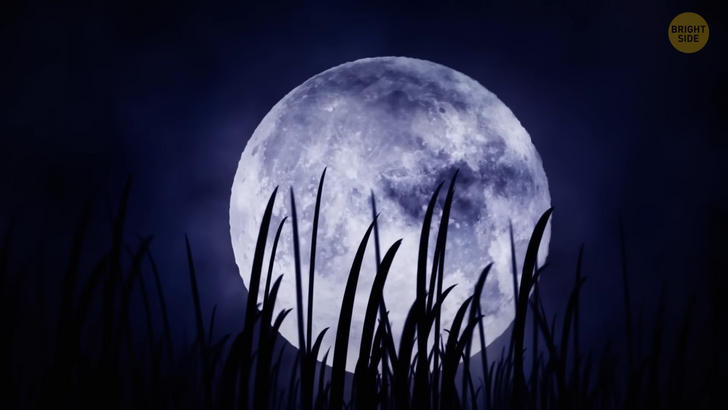
You can only see a supermoon (which looks like a huge bright ball in the night sky) three or four times a year. It’s 13% bigger and 30% brighter than a regular full moon. You can observe this phenomenon when the Moon reaches its perigee — that’s the closest the satellite comes to Earth in its elliptical orbit. Giant and orange, a harvest moon appears in the sky close to the beginning of fall. In the times before electricity, farmers had to depend on the full moon’s light to harvest crops late into the night — hence the name.
And look at this breathtaking view! These clouds are called “iridescent clouds.” They form on top of cotton-like cumulus clouds after thunderstorms. Cumulus clouds are low-level ones and usually hover at a height not higher than 6,000 ft. When water vapor in them condenses, water droplets act as prisms, forming multicolored caps over the clouds. Fogbows are almost white, with pale blues on the inside and faint reds on the outside. You have higher chances of seeing a fogbow over water when warm air comes into contact with much colder water. This phenomenon also occurs when the sun is bright and the fog is thin enough for the light to get through.
Ever seen huge round discs in the sky? Most likely, those were lenticular clouds. They usually form over large and high places, like mountains or hills. When strong wind bumps into some barrier, this creates an air wave. The air kinda wraps around the obstacle. And the higher the barrier is, the colder the air that’s rising over it becomes. At some point, the moisture it contains turns into water droplets. And they form these unusual clouds. Lenticular clouds can look like waves, a pizza, or even a stack of pancakes.
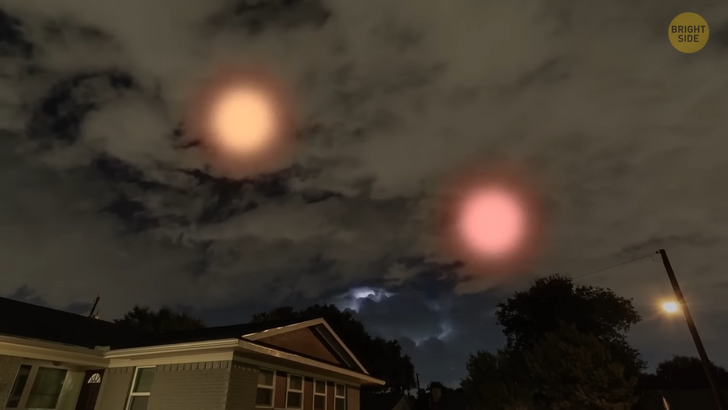
Now, this next phenomenon kinda terrifies me. Lightning balls are small floating spheres of light. They can be orange, yellow, or even red. Sometimes, lightning balls descend from the sky. In other cases, they appear out of nowhere, hovering several feet above the ground.
They don’t emit any heat and produce very little sound. Lightning balls can bounce off objects. If they come across something electrical, like a TV, they usually disappear with a quiet “pop,” leaving behind the smell of sulfur. But lightning balls can also start fires or explode. Scientists believe this phenomenon might be connected with thunderstorms, but there’s no solid proof yet.
Comments
Related Reads
12 People Who Unexpectedly Saw Something That Was Supposed to Stay Secret

9 Manicure Trends That Are Dominating This Summer 2025

I Lost My Baby Because of My MIL, and She Didn't Care

I Refuse to Accomodate My MIL’s Insane Food Requests

20 Crazy Wedding Stories Guests Won’t Soon Forget

17 Kind People Who Just Made Other People's Life Better
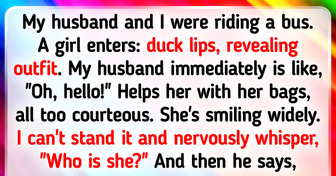
12 People Who Started a Normal Day but Ended It in Chaos

10 Brave Women Open Up About Their Most Cringe-Worthy Moments
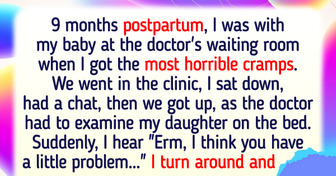
10+ True Stories With Endings No One Saw Coming
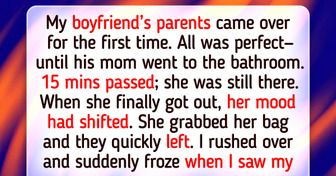
I Refused to Change My Sons’ Diet for My Ex’s New Family

15 Witty Folks Who Know How to Hack This Life
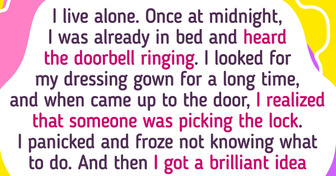
I Didn’t Allow My Ex’s New Partner at My Daughter’s Birthday — The Fallout Was Shocking
